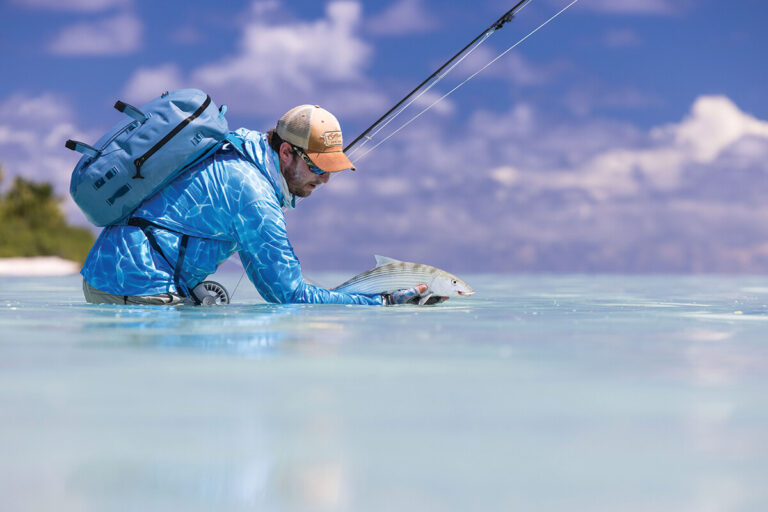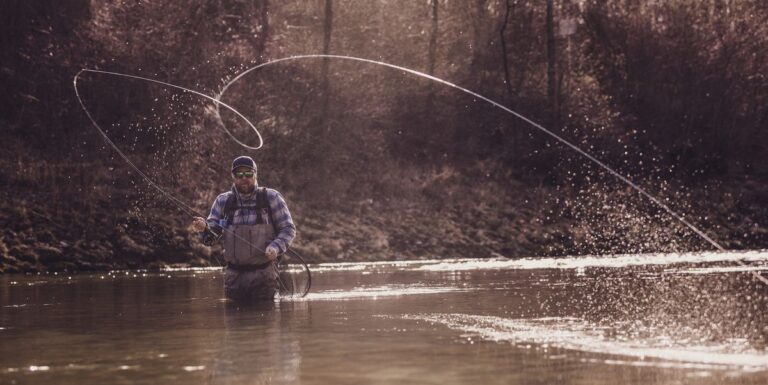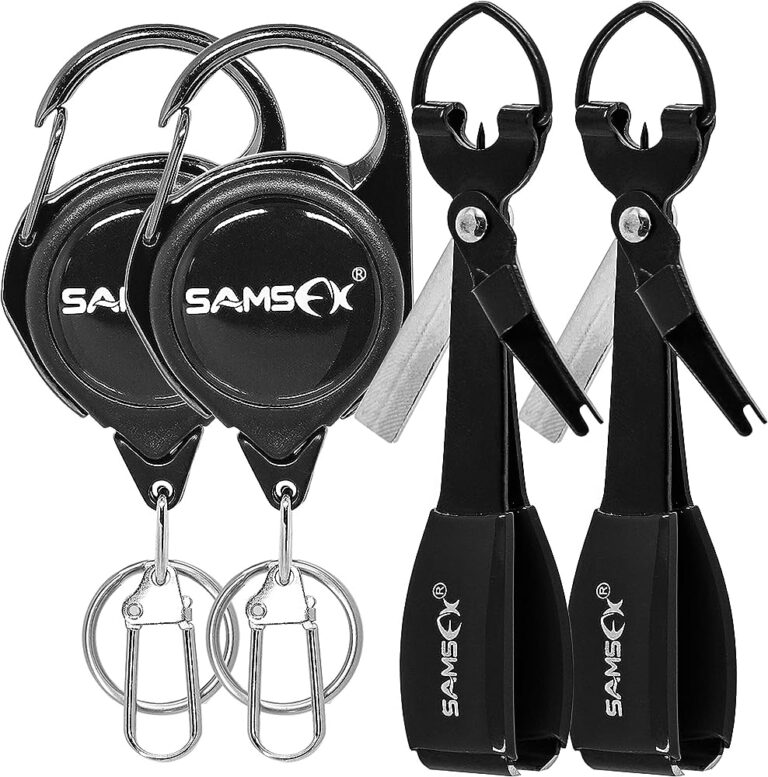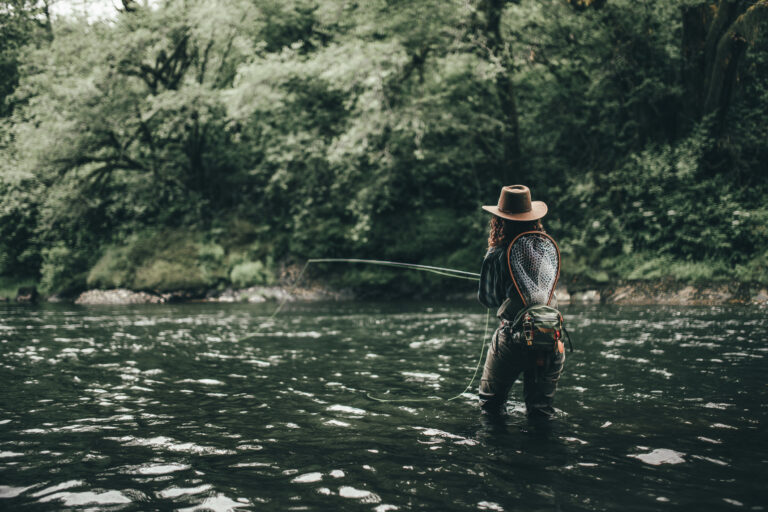Flats fishing and deep-sea fishing differ in the location and the type of fish targeted. Flats fishing takes place in shallow waters near the shore, targeting species such as bonefish and tarpon, while deep-sea fishing occurs in deeper offshore waters, targeting larger game fish like marlin and tuna.
Flats fishing is characterized by sight casting and using lighter tackle, while deep-sea fishing often involves trolling and heavy-duty equipment. Additionally, flats fishing is usually done in calm, clear waters, whereas deep-sea fishing takes place in rougher, more unpredictable seas.
These differences make each fishing style unique, offering anglers distinct challenges and opportunities for different types of fishing experiences. Whether you prefer the peacefulness of the flats or the thrill of the open sea, both flats fishing and deep-sea fishing provide an exciting adventure for any fishing enthusiast.
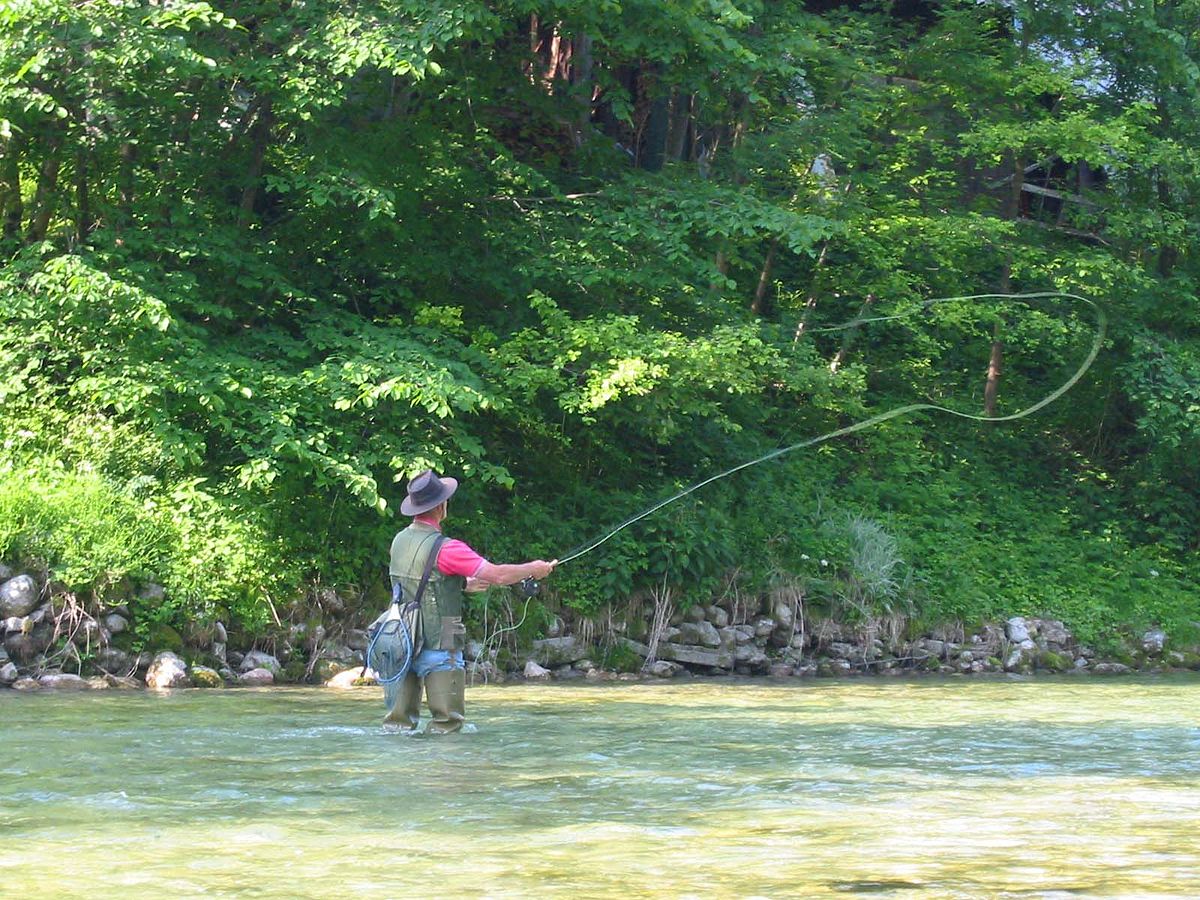
Credit: en.wikipedia.org
What Is Flats Fishing?
Flats fishing is an exciting and popular type of fishing that offers a unique experience compared to deep-sea fishing. Whether you’re an avid angler or someone looking to try out a new fishing adventure, understanding the differences between flats fishing and deep-sea fishing is essential.
In this section, we’ll dive into the definition and introduction to flats fishing, its characteristics and features, as well as the distinctive locations where it takes place.
Definition And Introduction To Flats Fishing
Flats fishing refers to a type of angling that takes place in shallow, clear waters such as saltwater flats, backcountry lagoons, or mangrove-lined channels. Here are some key points to know:
- Flats fishing focuses on targeting species that inhabit the shallows, such as bonefish, tarpon, permit, redfish, and snook.
- This type of fishing is typically done from a skiff or flats boat, which allows anglers to navigate the shallow waters and access areas where bigger boats cannot go.
- Flats fishing is characterized by sight fishing, where anglers spot fish cruising or tailing in the water and make precise casts to entice a bite.
- This technique requires stealth, patience, and accurate casting skills to lure and hook the fish successfully.
Characteristics And Features Of Flats Fishing
Flats fishing has several unique characteristics and features that set it apart from other types of fishing. Consider the following points:
- Light tackle: Anglers often use light spinning or fly-fishing gear to make delicate presentations to the fish. The thrill of landing a trophy fish on light gear adds to the excitement of flats fishing.
- Visual excitement: One of the most captivating aspects of flats fishing is the opportunity to witness fish in their natural habitat. Spotting their movements, tailing, or even seeing them eat the bait adds a visual element to the fishing experience.
- Technical skills: Flats fishing requires anglers to develop and refine their skills in spotting fish, casting with precision, and presenting the bait or fly in a way that mimics natural prey. It’s a challenging endeavor that rewards those who put in the effort to improve their abilities.
- Catch-and-release emphasis: Many flats fishing destinations prioritize conservation and promote catch-and-release practices to protect fish populations. This ensures the sustainability of the fishery for future generations of anglers.
Distinctive Locations For Flats Fishing
Flats fishing can be found in various locations worldwide. Here are some notable places where you can indulge in this exciting angling pursuit:
- Florida keys, usa: The florida keys are renowned for their expansive flats, where anglers can target species like bonefish, tarpon, and permit.
- Belize: The extensive flats and pristine waters of belize offer opportunities to pursue bonefish, permit, and tarpon.
- The bahamas: With its crystal-clear waters, the bahamas is an angler’s paradise for flats fishing. The islands offer excellent conditions for bonefish, permit, and tarpon.
- Seychelles: This stunning archipelago in the indian ocean is revered for its remote flats and abundance of species, including bonefish, permit, and various trevally species.
- Christmas island: Located in the pacific ocean, christmas island is famous for its exceptional bonefishing opportunities.
Flats fishing provides anglers with an extraordinary fishing experience, combining natural beauty, technical skills, and the thrill of spotting and catching fish in shallow waters. Understanding the distinct characteristics and unique locations of flats fishing can help you plan your next fishing adventure with excitement and anticipation.
So, grab your fishing gear and get ready to explore the fascinating world of flats fishing. Happy angling!
What Is Deep-Sea Fishing?
Deep-sea fishing is an exciting and adventurous type of angling that takes place in the open waters of the ocean. Unlike flats fishing, which typically occurs in shallow, calm waters near the coastline, deep-sea fishing involves venturing far offshore to catch fish that inhabit the deeper parts of the ocean.
This form of fishing offers unique challenges, experiences, and rewards for anglers who are looking for a thrilling fishing adventure.
Definition And Introduction To Deep-Sea Fishing
- Deep-sea fishing involves angling in the vast open waters of the ocean, far away from the shoreline.
- It is a type of fishing that targets species that inhabit the deeper parts of the ocean.
- Deep-sea fishing requires a boat capable of venturing far offshore to reach the desired fishing grounds.
- Anglers often use specialized equipment and techniques to target larger fish species that are found in these deep waters.
- This type of fishing offers an exhilarating experience and an opportunity to battle with powerful and iconic pelagic fish.
Characteristics And Features Of Deep-Sea Fishing
- Deep-sea fishing is characterized by its challenging nature and the need for specialized equipment.
- Anglers often use heavy-duty rods, reels, and lines to handle the powerful fish species they might encounter.
- Trolling, bottom fishing, and deep dropping are common techniques used in deep-sea fishing.
- Anglers can expect to target a wide range of fish species, including marlin, tuna, swordfish, mahi-mahi, and many others.
- The thrill of catching large, powerful fish in the deep waters of the ocean is a major draw for deep-sea fishing enthusiasts.
Distinctive Locations For Deep-Sea Fishing
- Deep-sea fishing can take place in various locations around the world, depending on the target species and the experience desired.
- Popular deep-sea fishing destinations include the gulf of mexico, the caribbean sea, the atlantic ocean, and the pacific ocean.
- Different regions offer different fishing opportunities, with some known for specific species or seasonal migrations.
- Chartering a boat with an experienced captain and crew is often the best way to access prime deep-sea fishing locations.
- These locations provide anglers with the chance to explore vast, open waters and potentially reel in trophy-sized fish.
Deep-sea fishing presents an incredible opportunity for anglers to venture into the open ocean and test their skills against powerful fish species. With its unique characteristics, challenging nature, and remarkable locations, deep-sea fishing offers a thrilling and unforgettable experience for those seeking a true angling adventure.
So, gear up, hop on a boat, and set sail for the wonders of deep-sea fishing!
Comparing Flats Fishing And Deep-Sea Fishing
Flats fishing and deep-sea fishing are two popular types of angling that offer unique experiences and challenges. Whether you’re a seasoned angler or someone looking to try out a new fishing adventure, understanding the differences between flats fishing and deep-sea fishing will help you make an informed decision.
So, let’s dive in and explore the contrasts between these two fishing styles.
Targeted Fish Species In Flats Fishing
In flats fishing, anglers typically target fish species that inhabit shallow, calm waters such as:
- Redfish: Known for their strength and agility, these popular game fish are found in coastal waters.
- Bonefish: Found in tropical and subtropical flats, bonefish are known for their speed and elusive nature.
- Tarpon: A prized catch in flats fishing, tarpon are large, silver-scaled fish known for their acrobatic jumps.
Targeted Fish Species In Deep-Sea Fishing
Deep-sea fishing, on the other hand, is all about venturing into the open waters to target larger and more powerful fish species, including:
- Marlin: Known for their size and strength, marlins are prestigious catches sought after by avid deep-sea anglers.
- Tuna: Found in both warm and cold waters, tuna are prized for their speed and fighting abilities.
- Mahi-mahi: Also known as dolphin fish, mahi-mahi are colorful fish widely sought after for their acrobatic displays.
Equipment Used In Flats Fishing Vs. Deep-Sea Fishing
The equipment used in flats fishing differs from deep-sea fishing due to the varying fishing environments. Here’s a breakdown of the equipment used in each style:
Flats fishing:
- Lightweight spinning or fly fishing tackle
- Flat-bottomed boats or kayaks for navigating shallow waters
- Specialized flies or lures designed for sight fishing in clear water
Deep-sea fishing:
- Heavy-duty rods and reels capable of handling large fish
- Offshore boats designed for deep-sea adventures
- Trolling rigs or live bait setups for attracting deep-water species
Techniques And Strategies In Flats Fishing Vs. Deep-Sea Fishing
Different fishing environments require distinct techniques and strategies. Here’s a glimpse into the approaches used in flats fishing and deep-sea fishing:
Flats fishing:
- Sight fishing: Anglers carefully search for fish in the shallows and cast their lures or flies when a target is spotted.
- Stealthy approach: Because of the clear water on flats, anglers must be silent and avoid spooking fish with excessive noise or movement.
Deep-sea fishing:
- Trolling: Anglers trail baited lines behind moving boats to attract predatory fish species.
- Bottom fishing: By dropping lines to the ocean floor, anglers target species that inhabit reefs or wrecks.
Challenges And Rewards In Flats Fishing Vs. Deep-Sea Fishing
Both flats fishing and deep-sea fishing present their own sets of challenges and rewards:
Flats fishing:
- Challenges: Flats fishing requires patience, precision, and the ability to spot fish in clear water. It can be difficult to fool wary fish in shallow, calm environments.
- Rewards: Hooking a trophy fish in the flats is immensely satisfying due to the technical skill required. The serene beauty of the shallow water surroundings adds to the overall experience.
Deep-sea fishing:
- Challenges: Deep-sea fishing can be physically demanding and unpredictable due to weather conditions and the sheer power of the targeted species.
- Rewards: Landing a massive game fish after a battle of strength and endurance is a thrilling experience that leaves anglers with unforgettable memories.
Cost And Accessibility Of Flats Fishing Vs. Deep-Sea Fishing
Cost and accessibility are practical factors to consider when choosing between flats fishing and deep-sea fishing:
Flats fishing:
- Cost: Flats fishing trips are usually more affordable, as they require less specialized equipment and can be done in smaller boats or kayaks.
- Accessibility: Flats fishing is more accessible to anglers who live near coastal areas or travel to tropical destinations with expansive flats.
Deep-sea fishing:
- Cost: Deep-sea fishing trips tend to be more expensive due to the need for larger boats, heavy-duty equipment, and longer travel distances to reach deep waters.
- Accessibility: Deep-sea fishing requires access to deep waters, so it’s typically limited to coastal regions that offer easy access to the open ocean.
As you can see, flats fishing and deep-sea fishing offer distinct experiences, targeting different fish species and requiring specific equipment and techniques. Whether you prefer the tranquility of the flats or the adrenaline-pumping action of the open sea, both fishing styles have their own unique charm.
Choose the one that aligns with your preferences, and get ready for an adventure on the water.
Conclusion And Recommendations
Final Thoughts On The Differences Between Flats Fishing And Deep-Sea Fishing
Flats fishing and deep-sea fishing are two distinctly different types of fishing that offer unique experiences and challenges. Whether you prefer the tranquility of the shallows or the thrill of the open ocean, there are a few key differences to consider when deciding which type of fishing is right for you.
Here is a summary of the key points to keep in mind:
Flats Fishing:
- Flats fishing is typically done in shallow, calm waters such as tidal flats, lagoons, and estuaries.
- The primary target species in flats fishing are usually bonefish, permit, tarpon, redfish, and snook.
- Flats fishing requires a stealthy approach, as the fish are often easily spooked in the clear, shallow waters.
- Anglers often wade or use shallow-draft boats to navigate the flats and get closer to the fish.
- Flats fishing offers a more intimate and immersive experience, where anglers can enjoy the quiet beauty of nature while stalking their prey.
- This type of fishing is well-suited for anglers who enjoy sight fishing, as you can often see the fish before making your cast.
- Since flats fishing generally takes place closer to shore, it can be an ideal option for those who may get seasick or prefer calmer waters.
Deep-Sea Fishing:
- Deep-sea fishing, on the other hand, takes place in deeper offshore waters, usually several miles away from the coast.
- The target species in deep-sea fishing include larger predators such as marlin, tuna, swordfish, and mahi-mahi.
- Deep-sea fishing requires a sturdy boat capable of handling the rougher conditions of the open ocean.
- Anglers often use trolling techniques or drop lines with heavy weights to reach deeper depths where the fish are found.
- Deep-sea fishing offers the excitement of battling powerful fish in a vast, ever-changing marine environment.
- This type of fishing is popular among thrill-seekers and those who enjoy the adrenaline rush of reeling in a big catch.
- If you’re looking for a chance to test your skills and tackle against some of the ocean’s most formidable creatures, deep-sea fishing is the way to go.
While both flats fishing and deep-sea fishing have their own merits, the choice ultimately depends on your personal preferences, experience level, and what you hope to get out of your fishing adventure. Whichever type you choose, remember to respect nature, follow local regulations, and enjoy the journey as much as the catch.
Happy fishing!
Conclusion
The key differences between flats fishing and deep-sea fishing are location, target species, equipment, and fishing techniques. Flats fishing involves fishing in shallow and calm waters, typically near the coast, targeting species such as bonefish, tarpon, and permit. It requires lighter tackle and a different style of casting called “sight fishing.
” On the other hand, deep-sea fishing takes place in offshore waters and targets larger species like marlin, tuna, and mahi-mahi. It requires heavier tackle, specialized equipment, and a different approach to finding and catching fish. Both types of fishing offer unique experiences and challenges for anglers of all skill levels.
Whether you prefer the tranquility and precision of stalking fish in shallow waters or the thrill of battling with powerful offshore species, there is something for everyone in the world of fishing. So, the next time you’re planning a fishing trip, consider these differences to choose the style that suits your preferences and goals.
Happy fishing!

